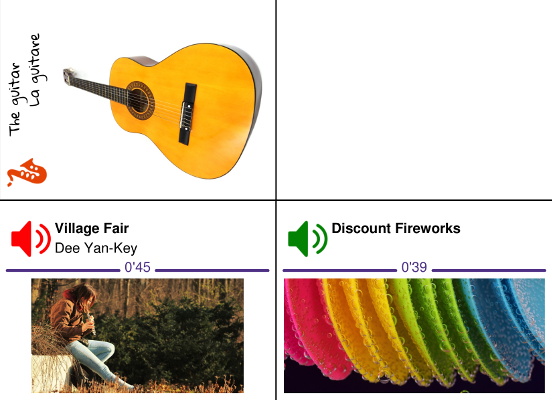Following the first part, here more information about the design choices.
Cards
Depending on the frequency and the capabilities of the tag, several (physical) formats are available. For the 125kHz frequency, the non-rewritable sort seems to exist in 3 main forms:
- keyring tags: possibly great for specific functions but also a potential choking hazard for young children
- stickers: They seem "quite" thick (a good millimetre?) but could be attached to toys or figurines.
- cards (thin or thick): thins one are cheap (about $0.10 per card), sturdy and reliable.
Labels
Wondering how to personalise the cards, in the end I went for a simple printed sticky label which can be replaced if necessary. With the A4 paper size, it is possible to find some sheets with 15 labels (70 x 50.8mm). These are slightly smaller that the cards themselves (85.6 × 53.98 mm) but near enough.
Creation
As mention before, there are several type of cards depending on the content. So far, this is mainly related to either the colour of the icon or the design of the label.

The first and main type has the following definition:
- title1: Village Fair
title2: Dee Yan-Key
image: village.jpg
category: music2
duration: "0'45"
print: yes
where category can be (for now): music1 (relaxing), music2 (entertaining), story.
The second type, print vertical labels:
- name: The guitar
nom: La guitare
image: guitar.jpg
category: instrument
print: yes
and is used for "sounds" like musical instruments or animals sounds for example.
Order of printing
The label positions are counted from the bottom-left-hand side of the page. If it seems a bit counter intuitive at first, there are 2 good reasons for this:
- The PDF coordinate system is working that way, so there is no need to swap values
- When printing with an inkjet printer, it is better if the feeding of the page is starting with the thickest part (i.e. with labels still present). By printing, thus removing, labels always at the bottom, it is safer when doing it by small batches.
ID

There are two IDs at the back of each cards. But in reality, the numbers are related. I have no idea why it is organised like this but the best guess is that is related to system with 16-bit storage/computation.
The first number represents the decimal value of the complete number (24 bits). For the second group, before the comma, it's the first 8-bit decimal number and after, the 16-bit decimal remainder.
For example:
13691859 = 208 x 65536 + 60371
Note that in the YAML database, only the first number is used without the leading zeros because YAML seems to have an issue with big numbers (or might consider the value as octal rather than decimal).